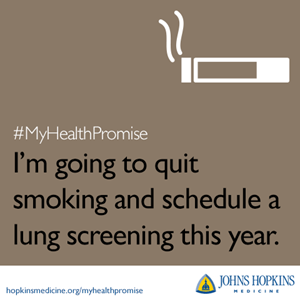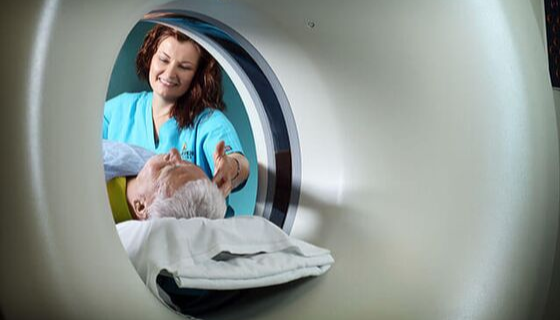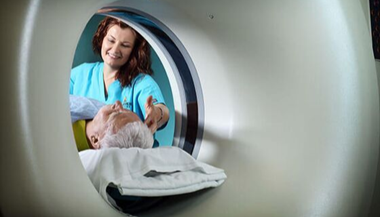Computed Tomography (CT) Scan of the Chest
What is a CT scan of the chest?
CT scan is a type of imaging test. It uses X-ray and computer technology to make detailed pictures of the organs and structures inside your chest. These images are more detailed than regular X-rays. They can give more information about injuries or diseases of the chest organs.
In a CT scan, an X-ray beam moves in a circle around your body. It takes many images, called slices, of the lungs and inside the chest. A computer processes these images and displays it on a monitor.
During the test, you may receive a contrast dye. This will make parts of your body show up better in the image.
Other related procedures that may be used to diagnose problems of the lungs and respiratory tract include bronchoscopy, bronchography, chest fluoroscopy, chest X-ray, chest ultrasound, lung biopsy, lung scan, mediastinoscopy, oximetry, peak flow measurement, positron emission tomography (PET) scan, pleural biopsy, pulmonary angiogram, pulmonary function tests, sinus X-ray and thoracentesis.
Why might I need a CT scan of the chest?
A CT scan of the chest may be done to check the chest and its organs for:
-
Blockages
-
Injuries
-
Intrathoracic bleeding
-
Infections
-
Other health problems
-
Tumors and other lesions
-
Unexplained chest pain
A CT scan may be done when another type of exam, such as an X-ray or physical exam, is not conclusive.
This test may also be used to guide needles during biopsies of thoracic organs or tumors. A biopsy is when a small piece of tissue is removed so it can be examined in the lab. CT scans can also be done to help remove a sample of fluid from the chest. They are useful in keeping an eye on tumors and other conditions of the chest before and after treatment.
There may be other reasons for your healthcare provider to recommend a CT scan of the chest.
#TomorrowsDiscoveries: Cardiovascular Imaging | Joao A. C. Lima, M.D., M.B.A.
Dr. Joao Lima describes recent advances in imaging that provide crucial information about the heart and blood vessels without the need for invasive procedures like dye injections and catheterization.
What are the risks of a CT scan of the chest?
You may want to ask your healthcare provider about the amount of radiation used during the CT scan. You should discuss the risks related to your particular situation. It is a good idea to keep a record of your past history of radiation exposure. Tell your healthcare provider about previous CT scans and other types of X-rays. Your risks of radiation exposure may be related to the total number of X-ray exams or treatments over a long period of time.
If you are pregnant or think you may be pregnant, tell your healthcare provider. Radiation exposure during pregnancy may lead to birth defects. If you are breastfeeding, let your healthcare provider know. Ask if you should pump and save breastmilk to use after the procedure.
If contrast dye is used, there is a risk you may have an allergic reaction to the dye. Tell your healthcare provider if you have ever had a reaction to any contrast dye, or if you’ve had any kidney problems.
If you have kidney failure or other kidney problems, tell your healthcare provider. In some cases, the contrast dye can cause kidney failure. This is especially true if the patient has underlying kidney problems or is dehydrated.
If you take the diabetes medicine called metformin with the contrast, you are at risk for developing metabolic acidosis. This is a condition where you have an unsafe change in blood pH. People with kidney disease are more prone to kidney damage after contrast exposure.
There may be other risks depending on your specific medical problems. Make sure your healthcare provider knows about all your medical problems before the procedure.
Certain things may make a CT scan of the chest less accurate. These include:
-
Barium in the esophagus from a recent barium study
-
Body piercing on the chest
-
Metallic objects within the chest, such as surgical clips or a pacemaker
How do I prepare for a CT scan?
If you are having a computed tomography angiography (CTA) with Johns Hopkins radiology, you will be given specific instructions when you make your appointment.
PRECAUTIONS : If you are pregnant or think you may be pregnant, please check with your doctor before scheduling the exam. Other options will be discussed with you and your doctor.
CLOTHING : You may be asked to change into a patient gown. If so, a gown will be provided for you. A locker will be provided to secure personal belongings. Please remove all piercings and leave all jewelry and valuables at home.
CONTRAST MEDIA : CT scans are most frequently done with and without a contrast media. The contrast media improves the radiologist's ability to view the images of the inside of the body.
-
Some patients should not have an iodine-based contrast media. If you have problems with your kidney function, please inform the access center representative when you schedule the appointment. You may be able to have the scan performed without contrast media or have an alternative imaging exam.
-
You will be asked to sign a consent form that will detail the risks and side-effects associated with contrast media injected through a small tube places in a vein called an intravenous (IV) line.
-
The most common type of CT scan with contrast is the double contrast study that will require you to drink a contrast media before your exam begins in addition to the IV contrast. The more contrast you are able to drink, the better the images are for the radiologist to visualize your digestive tract.
ALLERGY : Please inform the access center representative when you schedule your CT scan if you have had an allergic reaction to any contrast media. IV contrast will not be administered if you have had a severe or anaphylactic reaction to any contrast media in the past. If you had mild to moderate reactions in the past, you will likely need to take medication prior to the CT scan. These plans will be discussed with you in detail when you schedule your exam. Any known reactions to a contrast media should be discussed with your personal physician.
EAT/DRINK : If your doctor ordered a CT scan without contrast, you can eat, drink and take your prescribed medications prior to your exam. If your doctor ordered a CT scan with contrast, do not eat anything three hours prior to your CT scan. You are encouraged to drink clear liquids. You may also take your prescribed medications prior to your exam.
DIABETICS : Diabetics should eat a light breakfast or lunch three hours prior to the scan time. Depending on your oral medication for diabetes, you may be asked to discontinue use of the medication for 48 hours after the CT scan. If you have a CT scan with Johns Hopkins radiology, detailed instructions will be given following your examination.
MEDICATION : All patients can take their prescribed medications as usual.
Based on your medical condition, your doctor may request other specific preparation.
Make a Health Promise

Smoking is the leading preventable cause of death in the U.S. If you’re a smoker and have thought about quitting, do it now. If you’ve recently quit smoking, schedule a pulmonary assessment and a chest X-ray or CT scan. This can help rule out chronic obstructive pulmonary disease, pulmonary nodules or lung cancer, or diagnose them early before other signs and symptoms occur.
Share your health promise on Twitter and Facebook:
What happens after a CT scan of the chest?
If contrast dye was used during your procedure, you may be watched for a period of time for any side effects or reactions to the contrast dye. These include itching, swelling, rash, or trouble breathing.
Tell your healthcare provider if you notice any pain, redness, or swelling at the IV site after you return home. These could be signs of an infection or other type of reaction.
If you are given contrast by mouth, you may have diarrhea or constipation after the procedure.
Otherwise, you don’t need any special care after a CT scan of the chest. You may go back to your usual diet and activities unless your healthcare provider tells you differently.
Your healthcare provider may give you other instructions, depending on your situation.




